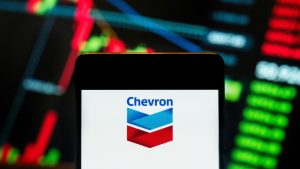I like to use the income generated from dividend shares to buy more stocks. I can then take advantage of compounding, once described as mankind’s greatest invention.
But it’s always wise to investigate a share offering apparently generous levels of passive income.
Basic maths
That’s because a stock’s yield is a function of its dividend and share price. And if one of these two elements moves significantly, it can have a big impact.
A falling share price could be a sign of a fundamental problem. If this proves to be the case, there’s a strong possibility that the payout will eventually be cut.
In a recent report, AJ Bell offered a “rule of thumb” for determining whether a dividend was sustainable. It suggested that if the return exceeded the 10-year gilt yield (3.77% at 18 September) by a factor of two, then what’s on offer may turn out to be too good to be true.
Using this approach, any share yielding more than 7.5% might be something of a value trap.
Six of the best
By my calculations, there are presently four shares in the FTSE 100 offering a return higher than this. Encouragingly, none of the yields appear to be distorted by a falling share price.
| Stock | Yield (%) | % change in share price (since 18.9.23) |
| Phoenix Group Holdings | 9.6 | +4 |
| M&G | 9.5 | +5 |
| Legal & General | 9.0 | +1 |
| British American Tobacco | 8.1 | +7 |
But that doesn’t mean the payouts are guaranteed. For example, during the past three financial years, Phoenix Group Holdings, the retirement and savings specialist, has recorded a loss after tax. This is a possible warning sign that its dividend could be cut.
Another red flag is if a company’s returning nearly all of its profits to shareholders.
To continue to grow, most businesses need to reinvest some of their earnings in product development or replacing fixed assets. The payout ratio’s therefore a good measure of affordability.
M&G (93%) and Legal & General (94%), also operating in the financial service sector, have very high ratios.
In the absence of other information, history sometimes gives us clues as to how sustainable returns might be.
M&G was split from Prudential in 2019. Although it doesn’t have a long track record as a standalone company, it’s increased its dividend every year since becoming a listed business.
As a result of the global financial crisis, Legal & General reduced its payout in 2008 and 2009. And kept it unchanged in 2020.
Classy
But the most impressive of my four is British American Tobacco (LSE:BATS). It’s never cut its dividend. In fact, it’s increased it every year since 1998. This means it’s one of very few Dividend Aristocrats about.
And with a payout ratio of 76%, it appears to be the most secure of the four. It’s able to afford a generous dividend because it’s traditionally made a high-margin low-tech product.
But times are now changing and the company’s having to switch to manufacturing so-called ‘reduced-risk’ products. These are more costly to produce. During the six months to 30 June, this smokeless range contributed 17.6% of revenue but only 2.3% of operating profit.
Despite its credentials as an excellent dividend share, I don’t want to invest. Its new products are being increasingly restricted and it will have to find more cash — that’s historically been used to pay dividends — to promote them. Money will also be needed for innovation.
For this reason, I fear its current yield of 8.1% isn’t sustainable.
This post was originally published on Motley Fool




